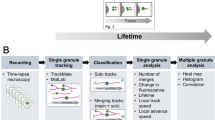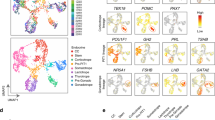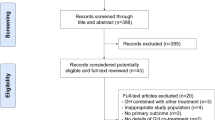Abstract
3T3 CELLS are embryonic mouse fibroblasts established in culture1. Serum depletion or “step-down” causes them to enter a “resting” state, which they leave on restoration of serum or “step-up”, entering the “proliferative” state2–4. This transition between resting (also called G0, A or R) and proliferating states seems to be the critical step in cell growth control5–7. Its study has been aided recently by several observations on extracellular growth regulators for 3T3 cells, for example the discovery of a new pituitary growth factor4,8, growth stimulation by glucocorticoids4,9 and interactions between pituitary factor and classical hormones10–12. Further studies would be greatly helped if variants or mutants of 3T3 with different growth responses towards hormones could be isolated. Here we report our finding of the variant ST1 which is inhibited by glucocorticoids, unlike 3T3 cells whose growth is stimulated by glucocorticoids4,9 (growth of fibroblasts is normally inhibited by glucocorticoids13). In this paper we discuss the value of this new cell type for studies of the resting–proliferative transition; elsewhere we shall report how the adhesion of this variant to the substrate is greatly affected by both the removal of serum and the addition of cyclic AMP.
This is a preview of subscription content, access via your institution
Access options
Subscribe to this journal
Receive 51 print issues and online access
$199.00 per year
only $3.90 per issue
Buy this article
- Purchase on SpringerLink
- Instant access to full article PDF
Prices may be subject to local taxes which are calculated during checkout
Similar content being viewed by others
References
Todaro, G., and Green, H., J. Cell Biol., 17, 299 (1963).
Todaro, G., Lazar, G. R., and Green, H., J. cell. comp. Physiol., 66, 325 (1965).
Hershko, A., Mamont, P., Shields, R., and Tomkins, G. M., Nature new Biol., 232, 206 (1971).
Armelin, H. A., Proc. natn. Acad. Sci. U.S.A., 70, 2702 (1973).
Burns, F. J., and Tannock, I. F., Cell Tissue Kinet., 3, 321 (1970).
Smith, J. A., and Martin, L., Proc. natn. Acad. Sci. U.S.A., 70, 1263 (1973).
Armelin, H. A., in Biochemical Actions of Hormones, 3, (edit. by Litwack, G.), 1–21, (Academic, New York, 1975).
Gospodarowicz, D., Nature, 249, 123 (1974).
Thrash, C. R., and Cunningham, D., Nature, 242, 399 (1973).
Gospodarowicz, D., and Moran, J., Proc. natn. Acad. Sci. U.S.A., 71, 4648 (1974).
Holley, R. A., and Kiernan, J., Proc. natn. Acad. Sci. U.S.A., 71, 2908 (1974).
Armelin, H. A., and Armelin, M. C. S., Biochem. biophys. Res. Comm., 62, 260 (1975).
Dougherty, T. F., Stevens, W., and Schneebeli, G. L., Rec. Prog. Hormone Res., 29, 287 (1973).
Pratt, W. B., and Aronow, L., J. biol. Chem., 241, 5244 (1966).
Ruhman, A. G., and Berliner, D. L., Endocrinology, 76, 916 (1965).
Gray, J. G., Pratt, W. B., and Aronow, L., Biochemistry, 10, 277 (1971).
Wigler, M., Ford, J. P., and Weinstein, I. B., Cold Spring Harb. Conf. Cell Proliferation, 2, 849 (1975).
Fodge, D. W., and Rubin, H., Nature, 257, 804 (1975).
Armelin, M. C. S., Gambarini, A. G., and Armelin, H. A., Archivos de Biologia y Medicina Experimental, 10: Proc. Int. Symp. cell. Proliferation Differentstion: Molecular Aspects (edit. by Allende, J. E.),(1976).
Stoker, M., Nature, 218, 234 (1968).
Hsu, T. C., and Pomerat, C. M., Heredity, 44, 23 (1953).
Author information
Authors and Affiliations
Rights and permissions
About this article
Cite this article
ARMELIN, M., ARMELIN, H. Serum and hormonal regulation of the “resting-proliferative” transition in a variant of 3T3 mouse cells. Nature 265, 148–151 (1977). https://doi.org/10.1038/265148a0
Received:
Accepted:
Published:
Issue date:
DOI: https://doi.org/10.1038/265148a0



